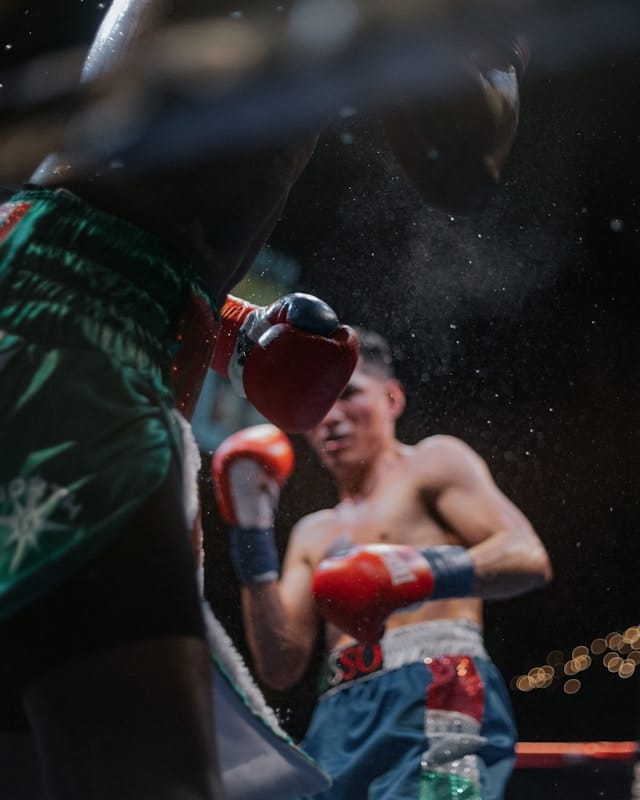Weight cutting is a common strategy in sports where athletes compete in weight classes, like mixed martial arts (MMA). The idea is to lose as much weight as possible in the days before a weigh-in, then quickly regain it before the actual fight. This process, when done correctly, can — to an extent — give fighters an edge in strength and size over their opponents. However, the practice isn’t without its risks. Rapid weight loss and recovery can take an extreme toll on the body and, in severe cases, can even be deadly. So, how can MMA fighters safely cut weight before a bout? This article delves into the strategies and best practices for weight cutting in combat sports.
Understanding the Science of Weight Cutting
Weight cutting revolves around manipulating your body’s water content. Since the human body is composed of about 60% water, it’s possible to temporarily reduce your weight by reducing your water intake and increasing water loss. It’s crucial to understand that the weight lost through this method is not fat, rather it’s water weight and will rapidly return once you start rehydrating.
Dans le meme genre : What Are the Most Effective Breathing Techniques for Stamina in Distance Swimmers?
During the weight cut, athletes employ several strategies to lose water weight. These can include but are not limited to: restricting fluid intake, excessive sweating through training or sauna use, and even using diuretics to increase urine production. While these methods may bring about the desired result in terms of weight loss, they can also lead to dehydration, which can severely affect an athlete’s performance and health.
The Importance of Proper Hydration
Hydration is critical for the body’s fundamental functions. It aids in digestion, keeps your skin healthy, lubricates your joints, and plays a vital role in maintaining the balance of bodily fluids. In the context of sports and training, staying hydrated helps to regulate body temperature, keep energy levels up, and ensure the body functions efficiently.
A lire aussi : What Are the Best Practices for Pre-Season Conditioning in Collegiate Football Linemen?
Dehydration, on the other hand, can lead to a slew of problems. Even mild dehydration can cause headaches, fatigue, and confusion. In more severe cases, it can lead to heat stroke, kidney failure, and other serious health conditions. Moreover, dehydration can lead to poor athletic performance, muscle cramps, dizziness, and even fainting.
Therefore, it is essential for fighters to stay hydrated even as they attempt to cut weight. To do this, fighters can limit their water intake rather than eliminating it entirely, ensuring they’re still getting some fluids. After the weigh-in, it’s crucial to rehydrate immediately and effectively to restore the body’s water balance before the fight.
Nutritional Strategies for Safe Weight Cutting
Aside from water manipulation, diet is another key element in weight cutting. By modifying their diet before a fight, athletes can reduce their body weight without compromising their strength or performance.
One common dietary strategy is to gradually reduce carbohydrate intake in the days leading up to the weigh-in. Carbohydrates cause your body to retain water, so decreasing your carb intake can help reduce water weight. However, fighters need to be careful not to cut carbs too drastically, as they are also a primary source of energy for the body.
Protein intake should be maintained or even increased to help preserve muscle mass during the weight cut. Fighters can also consider reducing their salt intake, as sodium can cause water retention.
The Role of Training in Weight Cutting
Training is an essential aspect of weight cutting. It helps burn calories and sweat out water, assisting in weight loss. However, training too hard or for too long can lead to overtraining and fatigue, which can negatively impact an athlete’s performance.
During the weight-cutting phase, the focus should be on maintaining fitness and strength, rather than trying to improve them. Training sessions should be moderate in intensity and duration, and fighters should ensure they’re getting sufficient recovery time in between.
In addition, implementing specific types of training can assist with weight loss. These can include high-intensity interval training (HIIT), which burns a lot of calories in a short amount of time, and strength training, which can help maintain muscle mass while losing weight.
Despite all these strategies, it’s crucial to remember that weight cutting will always have a level of risk associated with it. It’s a demanding process that puts significant strain on the body, and is not something that should be taken lightly or attempted without proper guidance and supervision.
Implementing a Personalized Approach to Weight Cutting
Weight cutting needs to be a personalized process due to the individual differences in body composition, metabolism, and overall health. This means that what works effectively for one fighter may not necessarily work for another. Different fighters may need to employ different weight cutting strategies to achieve the desired outcome.
Personal trainers, nutritionists, and medical professionals can provide valuable guidance here based on the individual’s health status, body mass, and specific needs. They can help create a balanced diet plan, set realistic weight loss goals, and monitor the fighter’s health throughout the weight cutting process. It is advised to have regular health check-ups to detect any potential issues early.
Mixed martial arts athletes should also be mindful of their training regimes. Training should be adjusted to complement the weight cut. Overtraining or exhausting oneself just before the weigh-in can lead to fatigue and decreased performance during the fight. On the other hand, a well-planned training regime that includes elements like strength training, cardio, and flexibility exercises, when combined with proper rest and recuperation periods, can optimize the weight cutting process without sacrificing performance.
Utilizing scientific methods like body composition analysis can help in understanding how much weight can be safely lost and what the body’s limits are. This can prevent dangerous situations of extreme weight loss and help plan an achievable and healthy weight cut.
Conclusion: Taking a Balanced and Informed Approach to Weight Cutting
In conclusion, weight cutting is a complex process that requires careful planning, supervision, and customization based on individual needs. Mixed martial arts fighters looking to cut weight before a fight need to do so in a safe and controlled manner. Rapid weight loss can have severe health consequences if not managed properly.
It’s essential to maintain a balance, ensuring that the body is still getting the necessary nutrients, hydration, and rest it needs to function properly. Cutting out water or food entirely, or exhausting oneself with excessive training, can do more harm than good.
The key to a successful and safe weight cut lies in understanding your body, knowing its limits, and taking a sensible, informed approach to weight loss. This involves employing a combination of dietary changes, hydration strategies, and suitable training regimes while regularly monitoring your health.
Always remember, the ultimate goal of weight cutting in combat sports should not just be to make the weight class, but to do so in a way that ensures that the fighter can perform at their best in the actual bout, without risking their health. After all, the true strength of a champion lies not just in their ability to win fights, but also in their ability to take care of their health and wellbeing.











